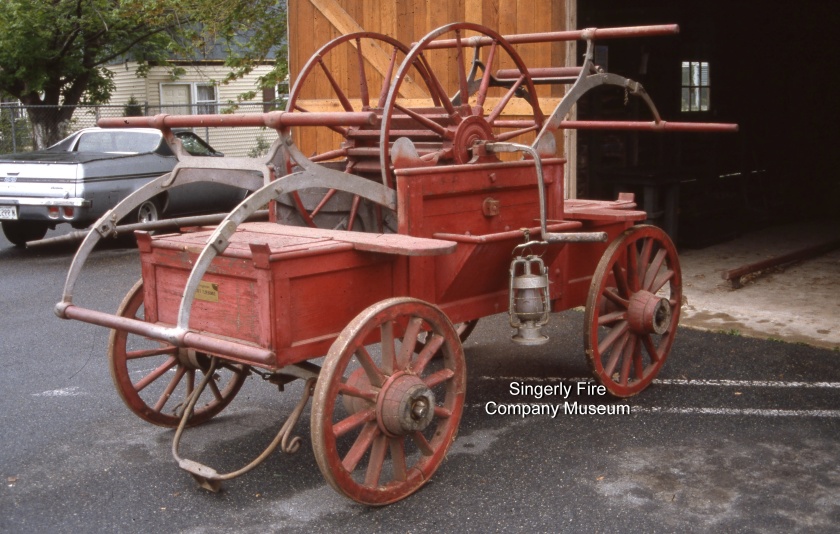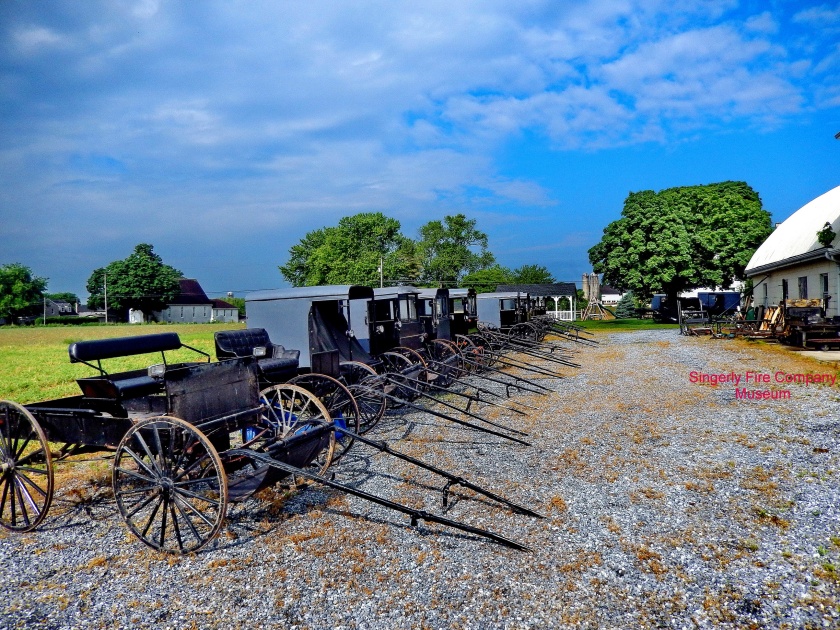In the mid-1980s, I started working on a project for Singerly Fire Company. We were preparing to celebrate our 100th anniversary in Elkton, MD, and planned several traditional projects. Tasks included researching, creating exhibits, commissioning an oil painting, and arranging events. However, we faced a challenge in restoring the two hand pumpers from the early 1800s, which had been used in Philadelphia, Baltimore, and Elkton.

The elder piece of apparatus arrived in Elkton in 1827. Technically called a hydraulion because it carried its own hose reel mounted on top, it had been the pride of the Elkton firefighters for generations. James Sellers, a Philadelphia mechanic, built it in 1817 for a volunteer fire company in Philadelphia. It served there for nine years before it came to Maryland. The second unit, a suction engine, landed in 1859. A Baltimore company sold it as the city converted to steam engines.
These two hand pumpers were the town’s defense against flames until 1892, when Singerly purchased a modern Amoskeag Steam Engine. After that, the town gradually forgot about these units from another age, except for an occasional parade or special occasion, until the centennial neared. However, these aging relics needed work, so we started searching for contacts to help restore them.
We found Jack Robrecht and Al Wills, two fire service historians associated with the Philadelphia Fire Museum. After examining the pieces in Elkton, the Philadelphians suggested contacting an Amish carriage maker.

In 1985, members of the company traveled to Lancaster County and talked with the Bart Fire Company. One of their members at the station that day recommended we visit the Nickel Mine Coach shop just a mile or two up the road from the firehouse. At the shop, we met a master Amish craftsman, Christian Petersheim Jr., and we discussed the restoration. As we were interested in engaging Mr. Petersheim but needed an estimate, a committee member drove him to Elkton to work up a quote a week later.
We settled on a price, and another member hauled the pumpers to Bart, PA. There, the master artisan and his helpers carefully examined the carriages to assess the restoration work required. Then, they disassembled them piece by piece, preserving the original components. Using hand tools from the 19th century, they cleaned, repaired, and reassembled the frames. The team used high-quality materials to paint and finish the carriages, resulting in beautifully restored artifacts.
The Nickel Mine Shop preserved the original design and ensured the pumpers were ready for another century. The shop did not have a telephone, so when we needed to talk with Mr. Petersheim, he went to the village store in Bart, where there was a payphone. The carriage maker finished the work a few years before the 100th anniversary.
In 2013, I revisited the Nickel Mine Road in Paradise, PA. Mr. Petersheim had retired, but his sons now manage the business. Still, I found him next door in a smaller shop as he has taken up reupholstering antique automobiles, including some for the Ford Museum. There as he where we reminisced about the job nearly 30 years earlier and viewed a photo album documenting the progress. Afterward, he won more fire department contracts, restoring seven additional hand-drawn fire apparatus. This apparatus came from VT., FL, PA., NY, and MD and included one hook and ladder. In his retirement, he started reupholstering antique cars from the early 1900s, which is what he was doing during my visit.

The work of this fine Amish craftsman appears in the Singerly Fire Company museum in Elkton, looking as good today as it did nearly forty years earlier when the two hand pumpers returned home to Elkton. Though we never tested it, Mr. Petersheim said the pump on the old hydraulion would work if we replaced a few seals. We were lucky to have the Philadelphia Fire Museum’s help and the carriage maker.

Mike,
did Mr Petersheim have any work in progress pictures?
Sam
Sam, actually he did. I was surprised how much he remember about that long ago project.